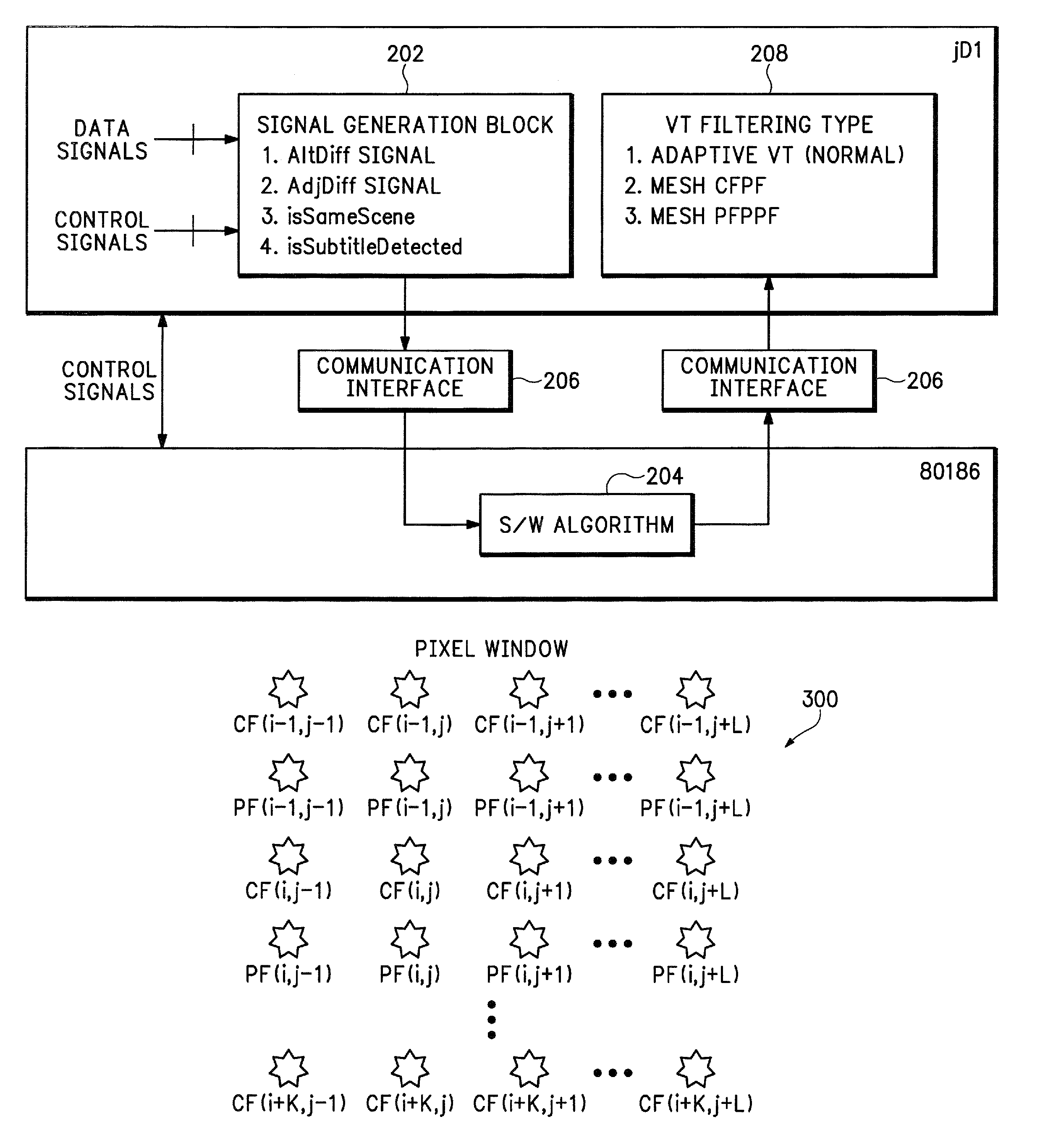System and method for detecting a non-video source in video signals
a non-video source and video signal technology, applied in the field of system and method for detecting a non-video source in video signals, can solve the problems of film detection algorithms as described above, failure of detection algorithms, and inability to recover properly
- Summary
- Abstract
- Description
- Claims
- Application Information
AI Technical Summary
Benefits of technology
Problems solved by technology
Method used
Image
Examples
Embodiment Construction
[0038]A system is described for detecting whether a video signal, such as NTSC, PAL or SECAM, contains an embedded film source. Each of the different types of embedded sources within a video signal is referred to as a mode. The modality of rile incoming video signal is determined and is subsequently used by a deinterlacing algorithm. The details of the deinterlacing algorithm are beyond the scope of the present invention and will be apparent to a person skilled in the art. Modality detection and recognition are used for directing the deinterlacing strategy such that it maximizes the visual quality of the output image for a format-conversion.
[0039]The system also implements pattern detection and analysis for identifying other less traditional patterns that are characteristic of computer video games. These different sources do not necessarily follow the 3:2 or 2:2 pattern. Therefore, the system is capable of implementing an N:M Autonomous State Machine that Searches for repetitive pat...
PUM
 Login to View More
Login to View More Abstract
Description
Claims
Application Information
 Login to View More
Login to View More - R&D
- Intellectual Property
- Life Sciences
- Materials
- Tech Scout
- Unparalleled Data Quality
- Higher Quality Content
- 60% Fewer Hallucinations
Browse by: Latest US Patents, China's latest patents, Technical Efficacy Thesaurus, Application Domain, Technology Topic, Popular Technical Reports.
© 2025 PatSnap. All rights reserved.Legal|Privacy policy|Modern Slavery Act Transparency Statement|Sitemap|About US| Contact US: help@patsnap.com



